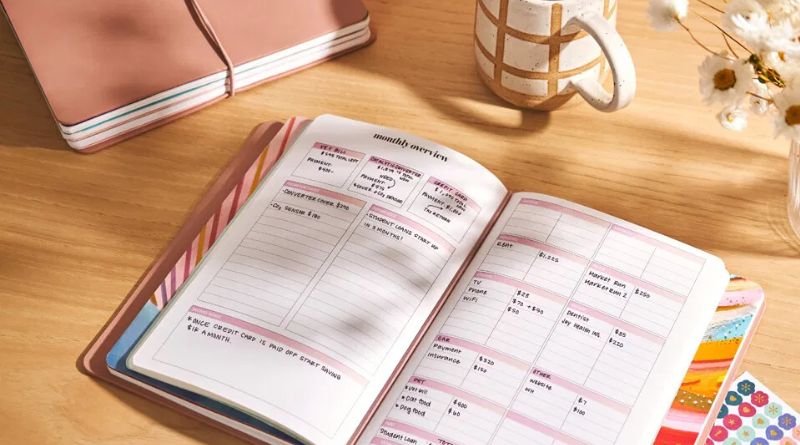Key Takeaways
- Personalized planners can significantly enhance productivity and organization by matching your unique preferences and routines.
- Consider format, size, style, and custom options carefully before choosing your planner.
- Identifying your organizational style and habits will help you pick a planner you’ll use all year.
- Features like sustainability, sturdy design, and useful extras add value to your organizational journey.
What Makes a Planner Personalized?
Personalized planners stand out from standard, one-size-fits-all diaries by catering to your daily habits and tastes. Unlike generic planners, these tailored options allow you to choose layouts, covers, and inserts that resonate with your workflow and personality. Whether you prefer motivational quotes, minimalist designs, or bright, lively pages, the core purpose is to make planning enjoyable and effective. For example, those publishing personalized planners recognize that an organized life is often more fulfilling. Not only do these planners help you schedule tasks and appointments, but they also become a reflection of your goals, priorities, and even your creative spirit.
Customizability can include features like the option to start your planner at any month, choose thick or thin pages, add specialized sections (like financial tracking or project planning), or even personalize the cover with your name or initials. Finding a planner that aligns with your daily routines and cognitive style results in greater engagement, clarifies priorities, and drives consistent use. A personalized planner becomes not just a tool but a trusted companion in your journey to a better-organized, more purposeful life.
Assessing Your Productivity Style
Understanding your internal organizational style is crucial to finding the right planner. Some people love writing detailed to-do lists and checking off completed items, while others map out their time visually, color-coding each block for quick reference. Some thrive with lots of freeform space to brainstorm, jot down ideas, or doodle alongside their daily tasks.
Reflect honestly on how you approach planning. If you’re a spontaneous thinker, bullet journal-style layouts that let you rearrange or adapt pages might be best. You might require a structured, hour-by-hour format if you’re more methodical or work in a fast-paced, appointment-driven role. Research shows that matching your planner with your psychological tendencies leads to better habit formation and increased productivity. Ultimately, it’s about customizing your organizational tool to support the way your brain works.
Layout Types: Daily, Weekly, or Monthly?
Planner layouts influence your ability to stay organized and motivated. Daily planners provide ample space for every task, meeting, and thought, making them ideal for those with many appointments or rapidly changing days. Weekly planners strike a balance, offering enough room for detail while keeping your focus on broader goals and progress. On the other hand, monthly planners suit those who need an at-a-glance overview for tracking recurring events, deadlines, or long-term goals.
Choosing the right type is essential for long-term success. If you like flexibility but crave structure, look for planners that combine multiple layouts or offer blank, lined, and grid pages. Sampling different structures with printable templates or digital versions for a few days can reveal what works best before you commit to a physical planner.
Size and Portability: What Fits Your Routine?
Planner size can make or break your organizational system. If you commute, move between meetings or classrooms, or like to take your planner everywhere, a lightweight, pocket-sized, or slim A5 option is best. These can easily slip into backpacks, handbags, or briefcases, ensuring that your plans are always within reach whenever inspiration strikes or a vital update comes along.
In contrast, if most of your planning happens at your desk—at home or work—a larger planner provides room for more detail. These might include areas for longer notes, creative sketches, or complex project planning. Visibility and accessibility are also important: a big, bold planner on your desk can be an ever-present reminder of your schedule and priorities.
Customizable Features to Look For
- Goal Tracking Sections: Pages dedicated to long-term and short-term goals, broken down into manageable steps, can keep ambitions realistic and progress measurable.
- Habit Trackers: Tracking daily water intake or weekly exercise builds satisfaction and accountability, helping you form lasting routines.
- Blank, Lined, or Dotted Note Pages:This open-ended space supports brainstorming, creative work, and any planning needs that don’t fit rigid boxes.
- Pockets, Tabs, and Dividers: Smart storage solutions help keep essential papers, reminders, and mementos close at hand.
- Color Coding and Decorative Elements: Highlighters, stickers, and tabs make key information pop and engage the process.
The right combination of features ensures that your planner adapts to changing needs and motivates you to return daily.
Matching Planners With Your Lifestyle
Your planner should reflect the demands and rhythms of your daily life. Students often benefit from pages designed for assignment tracking, exam countdowns, and project milestones. Professionals juggling diverse responsibilities might appreciate planners with multiple scheduling zones, space for meeting notes, or specialized project trackers. Parents may prioritize family calendars, meal planning charts, and activity logs for easier household management.
Creative people might seek mix-and-match layouts, mood boards, or sections for doodling and ideation. Minimalists thrive on decluttered spreads, embracing whitespace for clarity. Meanwhile, multitaskers might seek planners with multiple daily or weekly views to manage their varied roles in both personal and professional spheres. You look forward to using the right planner daily, supporting your productivity and satisfaction.
Quality, Sustainability, and Practicality
Material quality and practical extras are essential for planner satisfaction. Sturdy binding, water-resistant covers, and thick, smooth paper mean your planner will last even with daily use. If sustainability matters to you, seek planners made with recycled paper, soy-based inks, or refillable inserts—small choices that minimize waste and promote environmental responsibility.
Features like pen loops, elastic closures, page markers, and lay-flat binding make your planner more usable and enjoyable. These additions encourage consistent use, making the organization feel less like a chore and more like a satisfying daily ritual. Ultimately, a durable and thoughtfully designed planner is a wise investment in efficiency and sustainability.
Tips for Sticking With Your Planner
- Store your planner where you’ll always see it—on your desk, nightstand, or bag—so it’s always accessible and top-of-mind.
- Develop a regular planning “ritual,” such as updating your planner over your morning coffee or reviewing your week’s progress every Sunday evening.
- Customize your planner with colors, motivational stickers, personal photos, or creative doodles to make the process enjoyable.
- Conduct regular reviews to note your achievements, spot unfinished tasks, and align your system with your personal goals.
- Stay adaptable: as your priorities and schedule shift throughout the year, don’t hesitate to adjust your system or try new features to maintain engagement.
Regular use transforms planning from mundane to meaningful. Over time, checking in with your planner can be a touchpoint for self-reflection and progress.
Choosing Your Planner: A Recap
Ultimately, selecting the right personalized planner is about finding a tool that enhances—not complicates—your life. Matching your planner to your style, routine, and aspirations sets the stage for more mindful productivity and improved well-being. Whether you lean toward structure or flexibility, a thoughtfully designed planner becomes your everyday guide, confidant, and inspiration. The journey to greater organization begins with a choice, so take the time to understand your needs, compare options, and choose a planner that aligns with your best version.






